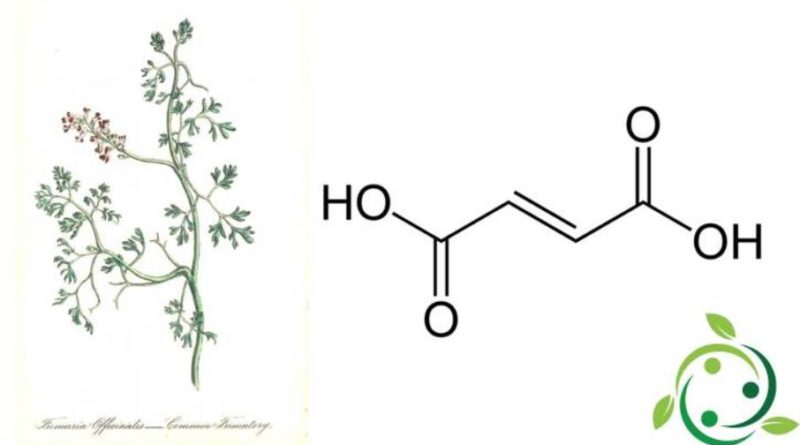Fumaric acid
Fumaric acid
Fumaric acid, whose term in the official IUPAC nomenclature is: E-butendiic acid, has a brute or molecular formula: C4H4O4.
Fumaric acid is an acid naturally present in fruits and vegetables, and has also been isolated in the roots of the Fumaria officinalis (Fumariaceae) from which it takes its name and is found in addition to plants of the genus Fumaria, in porcini mushrooms ( in particular in Boletus fomentarius var. Pseudo-igniarius), in lichens and in the Icelandic Cetraria.
From a chemical point of view, fumaric acid is an isomer of maleic acid (cis-butendiic acid); the two substances are stable and distinct isomers, since rotation around a double carbon-carbon bond is prevented, since the transition between the cis (Z) and trans (E) isomers requires considerable activation energy.
However, the characteristics of the two acids are somewhat different in that maleic acid is toxic, while fumaric acid is used as a medicine and in food products.
The commercial product, used by the food industry, is obtained through the fermentation of sugars (fermentative way) carried out by mushrooms, or through chemical synthesis (synthetic way). In the synthetic route, fumaric acid is mainly produced by isomerization of maleic acid, using urea as a catalyst.
In the past fumaric acid was prepared for the first time from succinic acid and a traditional synthesis route mainly provided for the oxidation of furfural (obtainable from the transformation of corn) using a chlorate in the presence of a catalyst based on vanadium.
Fumaric acid is used as a preservative and as an acidity regulator and stabilizer for many foods, generally in place of tartaric acid and sometimes citric acid and is classified as E297.
In addition to being a preservative, it is also used in medicine for the treatment of psoriasis, one of the most common chronic forms of skin disease.
In this case, fumaric acid is usually administered in doses of 60-105 mg per day, which can also be increased.
Side effects, if used as a medicine, can include gastrointestinal and kidney disorders, or redness of the skin. In all other cases, therefore, if consumed in normal quantities, it does not seem to produce harmful side effects.
It should also be remembered that fumarate, which is its anionic form, is an intermediate in the cycle of citric acid used by cells to produce energy in the form of adenosine triphosphate (ATP) from food. It is formed by the oxidation by the succinate dehydrogenase of the succinate. Subsequently the fumarate is converted from fumarate to malate. Human skin naturally produces fumaric acid when it is exposed to sunlight.
Other uses include its use in the synthesis of polyester resins and sugar alcohols and as a mordant for dyes and, moreover, used to synthesize one of the first metal-organic structures that present commercial applications thanks to its remarkable mechanical and adsorption properties, in combination with low toxicity compared to other well-studied MOFs.
Warning: The information shown is not medical advice and may not be accurate. The contents are for illustrative purposes only and do not replace medical advice.

